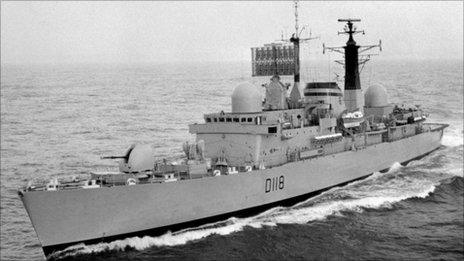HMS Coventry sinking anniversary: 'War we weren't prepared for'
- Published
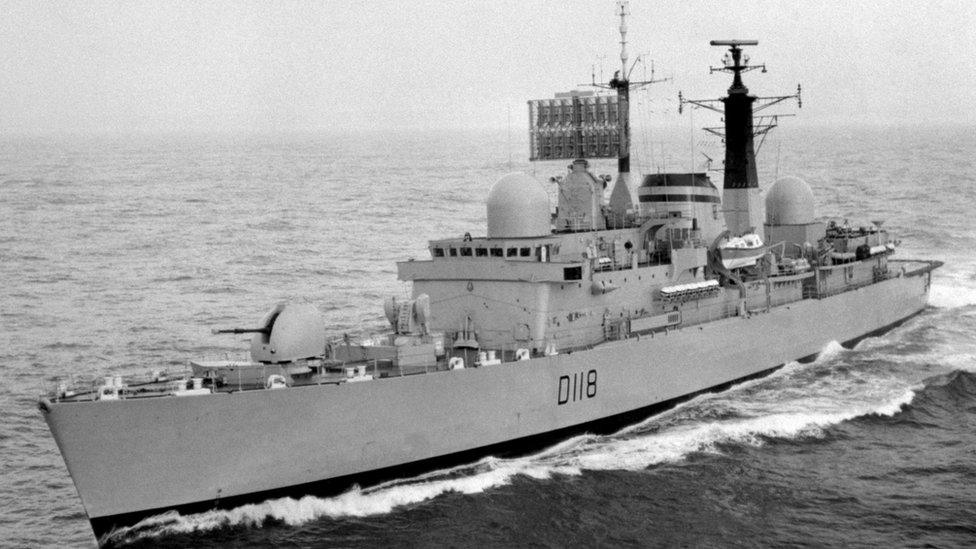
The destroyer shot down more enemy aircraft than any other ship during the Falklands War
Petty Officer Chris Howe was on board HMS Coventry on 25 May 1982, the night it was sunk during the Falklands War with the loss of 19 crew.
He suffered the worst physical injuries of any surviving member and tells BBC News what he remembers of those last moments on board.
"It was tragic, what happened to us. We were hit and sunk in half an hour. We didn't have long enough to get off."
Chris Howe suffered 27% burns when three Argentine bombs hit his ship. Two exploded.
Among the dead were Mr Howe's close colleagues - one of them a teenager of just 18.
"Seventeen men died in the ship, one died from drowning and the ship's first lieutenant died while leaving the vessel," he said.
Mr Howe was 25 years old and had 10 years' service to his name when The Falklands War broke out. He had grown up in the Navy, having joined as a teenager straight from school.
The conflict loomed suddenly for those aboard the Coventry.
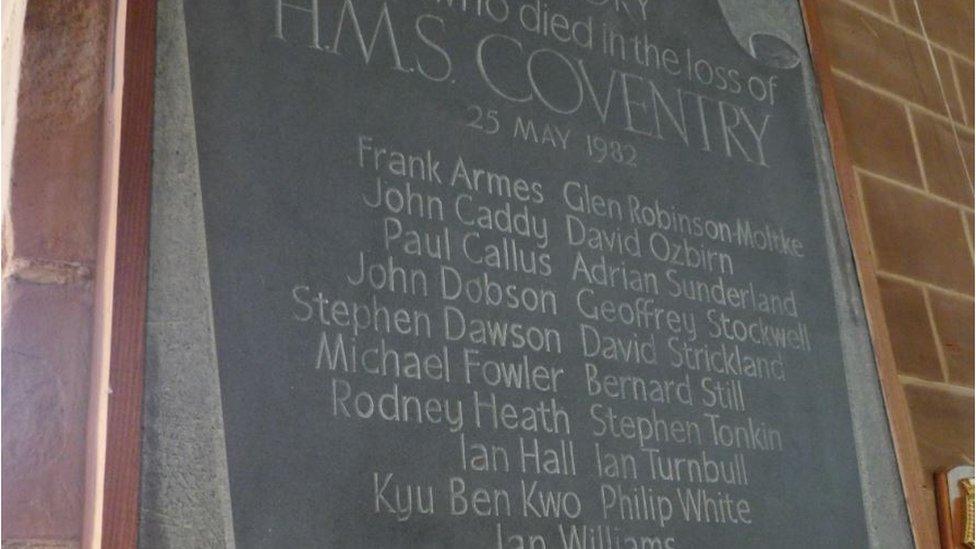
Each year the survivors lay a wreath at the Coventry memorial
Three hundred crew members on the UK warship were completing training exercises in the Mediterranean and on Gibraltar, expecting to go home for Easter, when war was declared on 2 April.
"It was a war we weren't prepared for," Mr Howe said.
"We were training to fight against the Soviets."
Indeed, the Coventry's captain - David Hart Dyke, the father of comedian Miranda Hart - was socialising with one of the Argentine captains just a few weeks before war broke out.
Throughout their two-week journey across the South Atlantic, Mr Howe and the rest of the crew believed the conflict would be resolved by politicians.
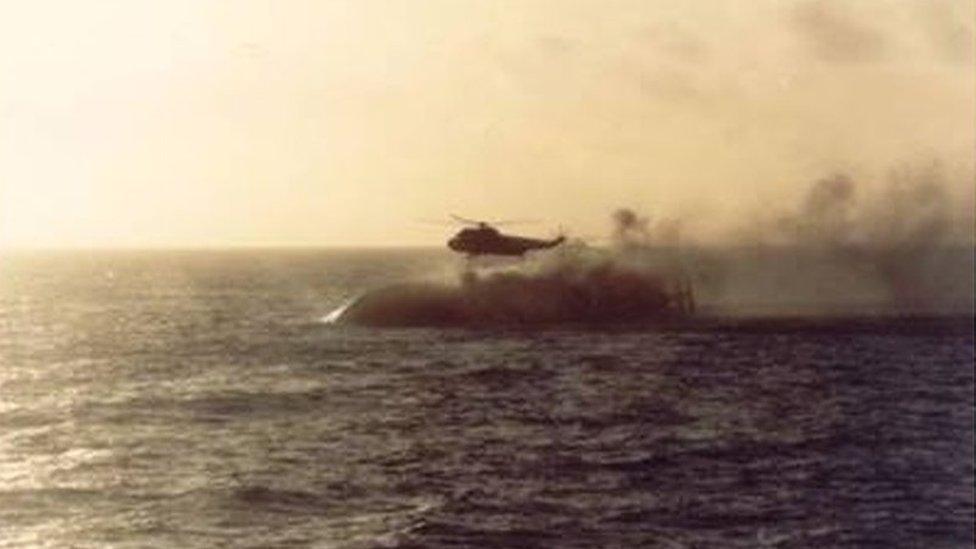
The ship sank half an hour after it was hit
Nevertheless, morale was high when the Coventry reached the total exclusion zone - the first British ship to do so.
A senior Petty Officer electronic warfare specialist and intelligence officer within the operations department, Mr Howe's focus was on compiling information about an enemy on which the British forces were poorly briefed.
The walls of his office filled with maps and charts, he researched what craft and weapons the Argentines had available.
As hostilities began, the crew's battle training kicked in.
Mr Howe believes the average age of those on board the the Type 42 Destroyer was about 25. Some were teenagers, others were men in their 40s with wives and children.
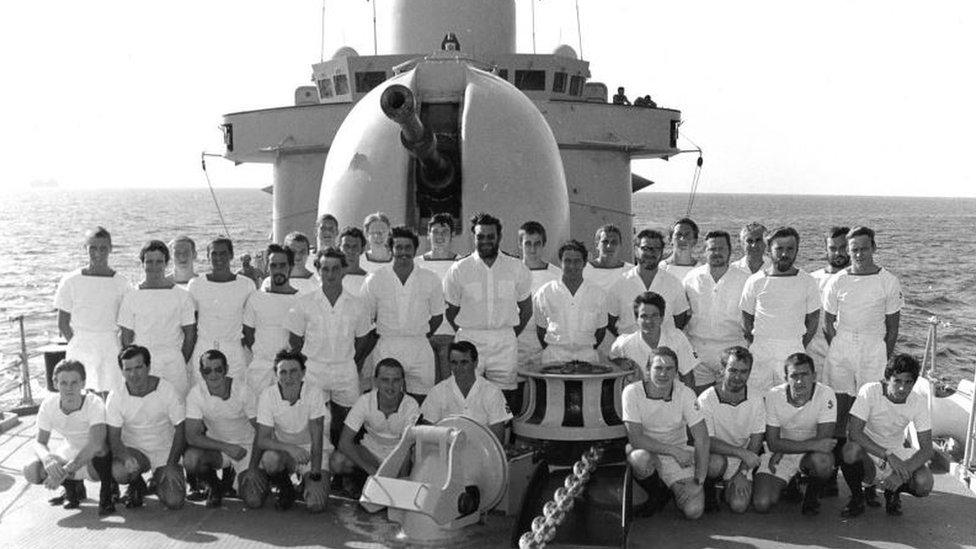
The close-knit crew had been expecting to go home when war was declared
He himself had a wife and two sons, aged four and 10 months, watching anxiously for news from their quarters in Gosport, Hampshire.
On 5 May, the Coventry's fellow destroyer HMS Sheffield was sunk.
"We could see it smoking on the horizon," Mr Howe said.
"Once the Sheffield was hit, we knew this was serious. That really did make us feel very vulnerable - who would be next?"
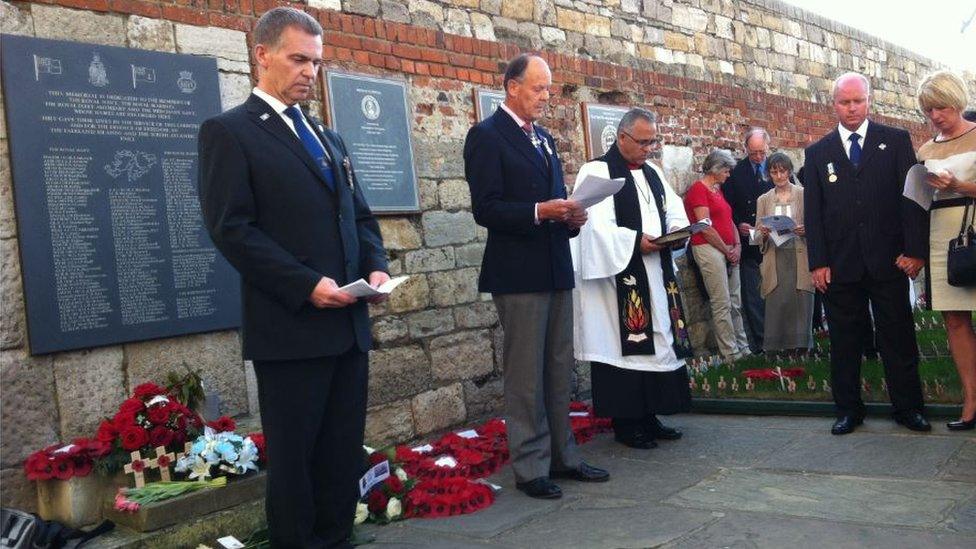
HMS Coventry's captain, David Hart Dyke, pictured in the centre, had met the Argentine captains prior to the outbreak of war
The Coventry was highly effective for the first few weeks of the war, taking out seven enemy planes.
It was protected by a fleet of Sea Harriers, as well as its on-board guns.
However, on 25 May the Harriers were otherwise engaged.
"It was the Argentinean National Day so we knew we were going to be targeted," Mr Howe said.
"It was a lovely day - unfortunately. The enemy had very good visuals."
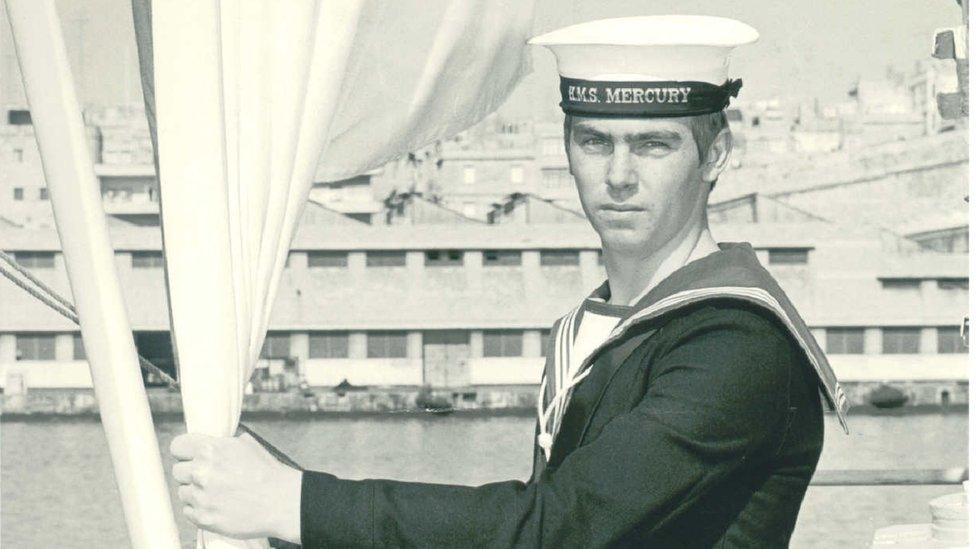
Chris Howe suffered 27% burns in the explosions
The Coventry's radars were not able to detect planes flying over land accurately.
There were just eight miles between the ship's position and Pebble Island and, as the Argentine Skyhawks - flying at up to 500mph - became visible, the crew had about 30 seconds to respond.
Three bombs hit the ship and two exploded.
Mr Howe was in the operations room and was knocked unconscious by the blast.
"When I came round, my left arm was on fire and I had to use my hand to put it out," he said.
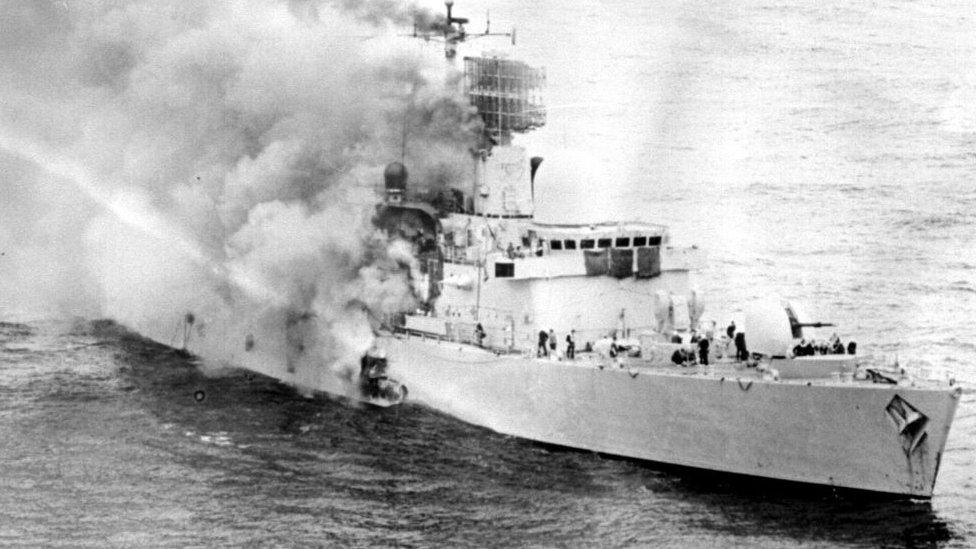
The sinking of the Sheffield made the crew of the Coventry feel vulnerable
"I was trapped in some wires and I had little or no clothing - it had all been burnt off. One of my shipmates helped me out."
The ship had already turned 45 degrees and the remaining crew were scrambling to get off. Mr Howe met the captain, who gave him a jersey to wear, and they slid down the side of the ship into the water.
"I was in a lot of pain and shock," he said. "But I was a good swimmer and I made it to a life raft. The crew didn't recognise me I was so badly burned."
Mr Howe was airlifted for treatment on board the SS Uganda, a hospital ship.
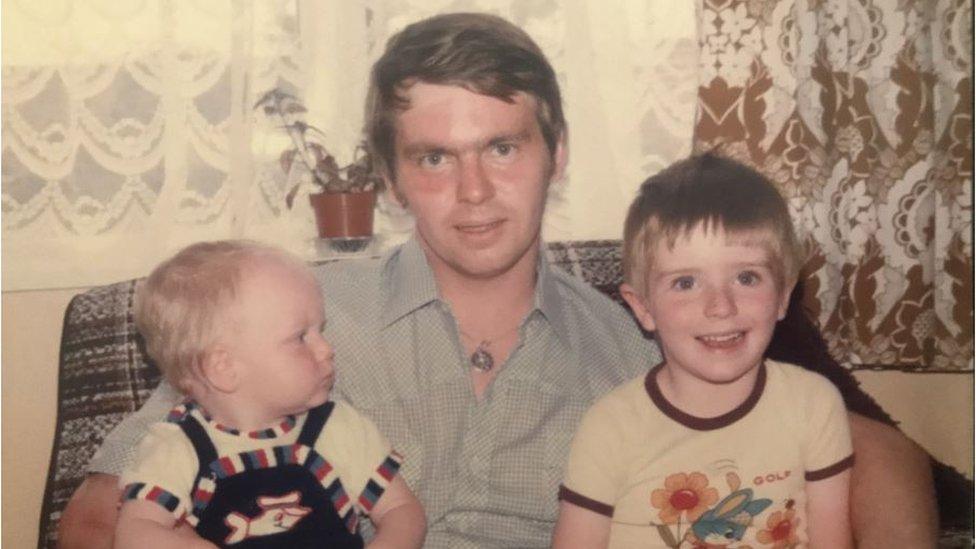
Like many of the crew, Chris Howe's family waited anxiously for news
"I lost all the skin off my back and I had drips in both arms. My face was badly burned and I was blind for a couple of days," he said.
"They said I looked like a Hammer Horror movie."
Back at home, Mr Howe's wife learned his condition was critical. "She had a worrying 24 hours but I did make it," he said.
After six weeks he returned home and, over time, the traces of his injuries have faded.
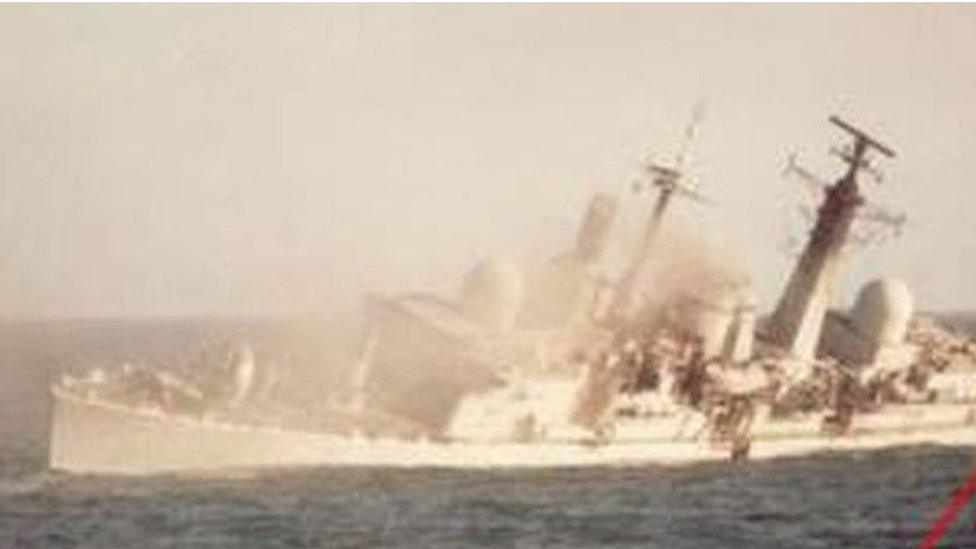
The ship tilted 45 degrees very quickly
"I was quite a mess but it's healed very nicely," he said. "I still have a load of scaring but I lead a normal life."
Mr Howe went on to serve in the Navy for 26 years, making warrant officer and was even appointed an MBE.
He now lives Helpringham, near Sleaford, Lincolnshire but travels to Coventry each year for the anniversary of the sinking.
And it is in Coventry, at Holy Trinity Church, in the heart of the city, that a memorial plaque bears the names of the 19 men lost in the ship's destruction.
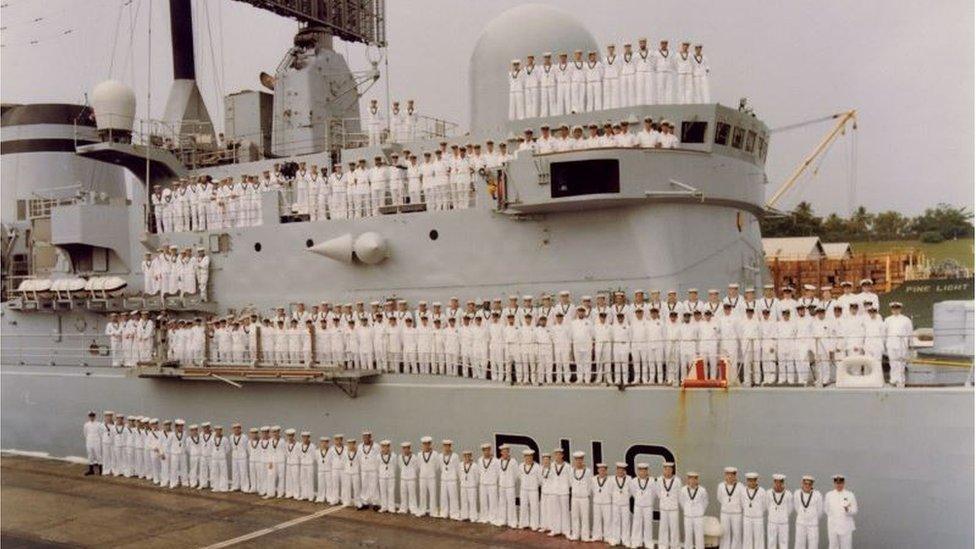
The average age of the crew was about 25
In this ancient place some of the survivors of the ship that bore the city's name gather to pay their respects to the dead.
Mr Howe chairs the HMS Coventry Association and is among those present for an annual service held in the church, where a wreath is laid and the association's standard is paraded.
Some of the names on the memorial were men who were known personally to him.
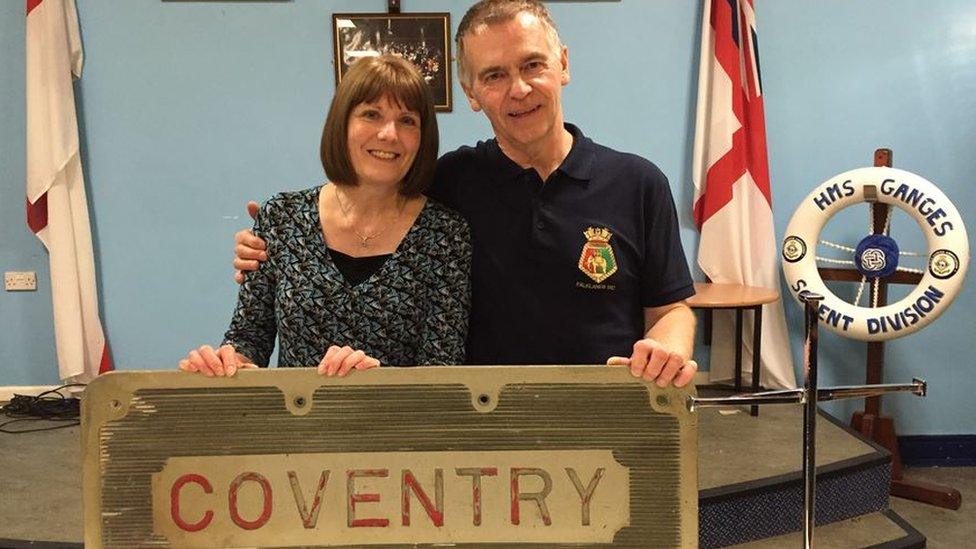
Mr Howe, pictured here with his wife, is planning a return visit to the Falklands to honour the lost men
"Below the operations room was the computer room and sadly all of the men in there died," he said.
"I also lost two of my own guys. One of them was only 18."
October will see Mr Howe and some of his former shipmates take a special trip to the Falklands to hold a memorial service over the site of the sunken ship.
For many, it will be the first time they have journeyed to the area since the tragedy.
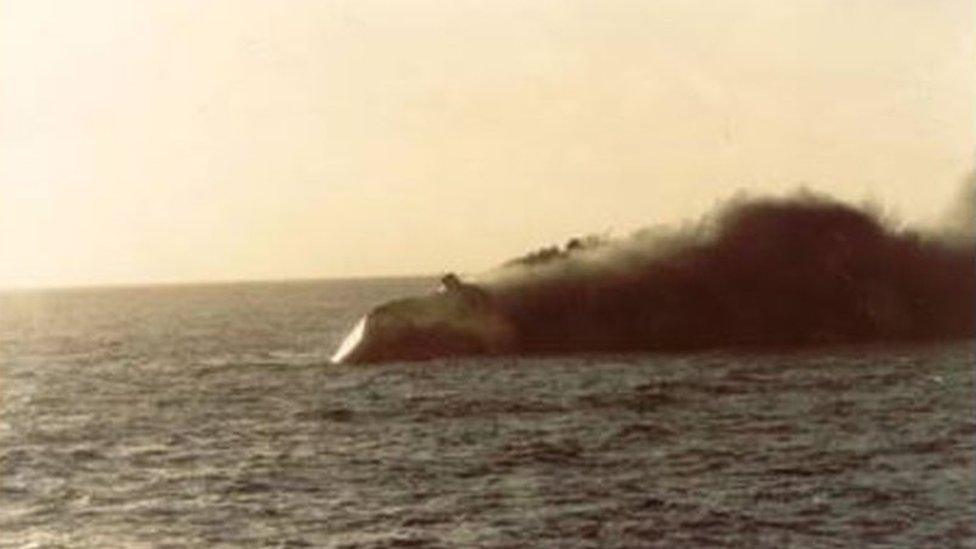
Mr Howe and other crew members will travel to the site of the sinking
"It will be a unique pilgrimage for most of us - an emotional but important one," he said.
He feels fortunate that, for him, the mental scars lasted only a few months.
"Some of the guys can't talk about that night," he said.
"A few of them will never talk about it but every year you get somebody new who wants to. I sit and listen to them and try to help."
- Published25 May 2012
